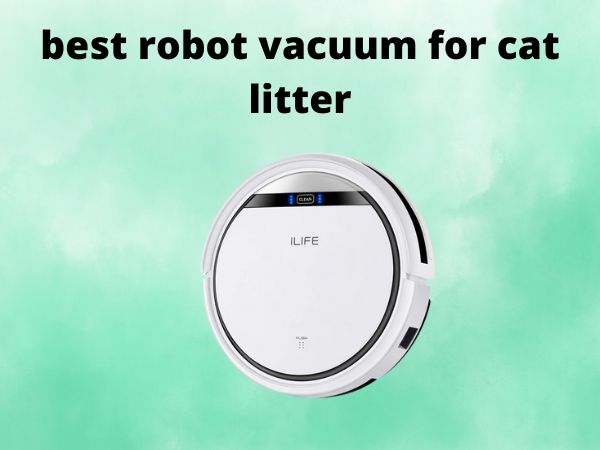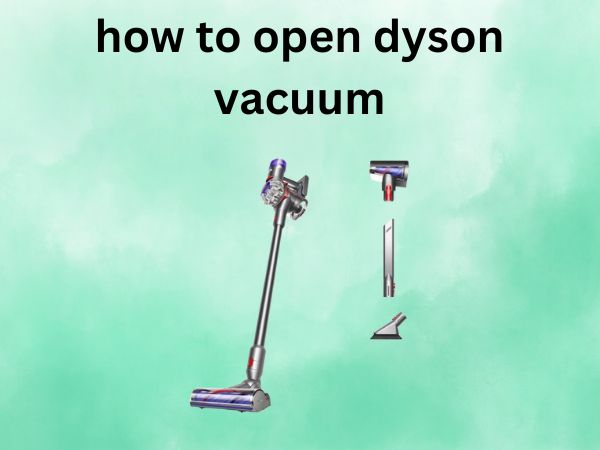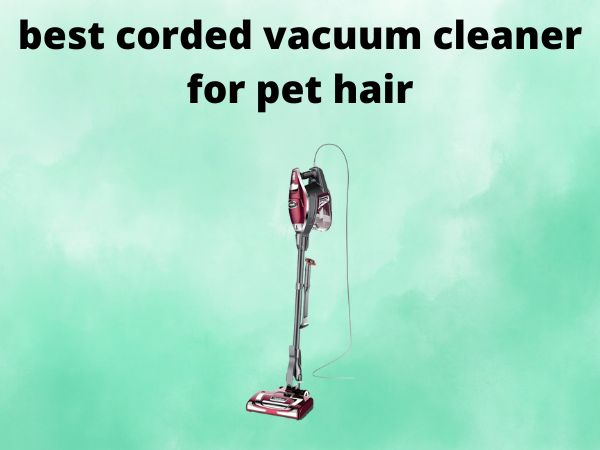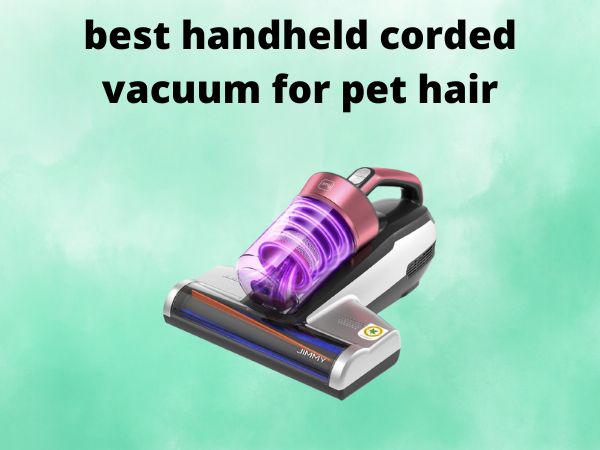5 Best Robot Vacuums for Cat Litter [In 2026]
Are you tired of constantly sweeping up scattered cat litter throughout your home? If you’re a cat parent, you know the struggle is real. Those tiny granules seem to have a mind of their own, spreading far beyond the litter box and embedding themselves in every corner of your house. But what if I told you there’s a solution that could handle this mess automatically while you’re sipping your morning coffee?
Enter the world of robot vacuums specifically designed to tackle cat litter. These smart little machines have revolutionized how pet owners maintain clean homes, and today we’re diving deep into the five best options that’ll make your life significantly easier.
Table of Contents
Top 5 Best Robot Vacuums for Cat Litter
1. ILIFE V3s Pro Robot Vacuum Cleaner
Key Features and Specifications
The ILIFE V3s Pro stands out as a budget-friendly champion specifically designed with pet owners in mind. This sleek, pearl-white machine measures 11.8″ x 11.8″ x 3″ and features a unique tangle-free pet hair care suction system that focuses on picking up hair without the complications of traditional roller brushes.
With 90-100 minutes of runtime, this robot can handle most homes on a single charge. Its low-profile design allows it to slip under beds and sofas where cat litter often hides. The automatic charging feature means it returns to its dock when the battery runs low, ensuring it’s always ready for the next cleaning session.
The V3s Pro uses infrared sensors for navigation, including anti-bump and anti-fall technology to prevent damage to your furniture and keep the robot safe around stairs. It’s specifically optimized for hard floors and low-pile carpets, making it perfect for homes with tile, hardwood, or laminate flooring where litter tracking is most problematic.
Pros and Cons
Pros:
- Excellent value for money with strong performance
- Tangle-free suction system perfect for pet hair and litter
- Slim design reaches under furniture easily
- Long battery life (90-100 minutes)
- Simple operation with remote control
- Specifically designed for hard floors where litter tracking occurs
- Quiet operation compared to traditional vacuums
Cons:
- Limited to hard floors and low-pile carpets only
- Basic navigation system (no smart mapping)
- Cannot handle thick carpets or rugs effectively
- Occasionally has trouble returning to charging dock
- No app connectivity or smart features
- May struggle with larger debris pieces
2. Lefant M210 Robot Vacuum Cleaner
Key Features and Specifications
The Lefant M210 brings modern smart technology to cat litter cleanup with its compact 11″ x 11″ x 2.8″ frame. This white robot vacuum boasts an impressive 120-minute runtime and features a unique brushless suction port that eliminates the hair-tangling issues common with traditional robot vacuums.
What sets the M210 apart is its comprehensive app control through the Lefant App, offering six different cleaning modes including zigzag, random, spot, edge, scheduled, and manual control. The upgraded FreeMove Technology 3.0 uses 6D built-in anti-collision infrared sensors to help the robot detect stuck areas and adjust its cleaning path automatically.
The M210 is compatible with both Alexa and Google Assistant, allowing for voice control convenience. Its lithium iron phosphate battery provides reliable, long-lasting power, and the robot automatically returns to its charging station when the battery reaches 20%.
Pros and Cons
Pros:
- Brushless suction eliminates hair tangling completely
- Six versatile cleaning modes for different situations
- Smart app control with scheduling capabilities
- Voice control compatibility (Alexa/Google Assistant)
- Excellent battery life (120 minutes)
- Strong suction power with adjustable levels
- Compact design fits under most furniture
- Collision avoidance technology
Cons:
- Not suitable for thick carpets (zigzag mode restricted)
- Requires good lighting for optimal obstacle detection
- App setup can be initially confusing
- May struggle with very large litter pieces
- Limited to 2.4GHz WiFi networks only
3. AIRROBO T25+ Robot Vacuum and Mop Combo
Key Features and Specifications
The AIRROBO T25+ represents the premium end of cat litter management with its impressive 5500Pa ultra-strong suction power and advanced LDS laser navigation system. This black robot measures 13.5″ x 13.5″ x 3.5″ and comes with a game-changing self-emptying base station equipped with a 3.5L dust bag capacity.
The T25+ features a specially designed auto-detangling rubber brush that prevents hair tangling, making it ideal for households with shedding cats. Its advanced ultrasonic sensor automatically detects carpets and activates “Carpet Lift Mode” for enhanced suction, while also offering a “Carpet Avoidance Mode” for mopping functions.
With up to 240 minutes of runtime, this robot can clean entire homes without interruption. The precision LDS laser navigation creates accurate maps and allows for sophisticated features like no-go zones, multi-floor mapping, and targeted room cleaning through the smart app.
Pros and Cons
Pros:
- Exceptional 5500Pa suction power handles heavy litter easily
- 60-day hands-free cleaning with self-emptying base
- Advanced LiDAR mapping with precise navigation
- Auto-detangling brush prevents maintenance headaches
- Combination vacuum and mop functionality
- Extended 240-minute runtime
- Smart carpet detection and avoidance
- Comprehensive app control with room mapping
Cons:
- Higher price point than basic models
- Larger footprint may not fit under some furniture
- Requires 110-120V power (transformer needed for other regions)
- Complex setup process for all features
- Mop function requires regular water tank refilling
- Only supports 2.4GHz WiFi networks
4. SHELIKI D60S Robot Vacuum and Mop
Key Features and Specifications
The SHELIKI D60S combines powerful 4000Pa suction with advanced 360° LiDAR navigation in a sleek gray design measuring 13″ x 17.5″ x 5.11″. This robot vacuum features intelligent mapping technology that can save up to 5 different floor plans, making it perfect for multi-story homes with cats.
The D60S offers six specialized cleaning modes (Zigzag, Auto, Edge, Spot, Scheduled, and Manual) and can create up to 14 exclusion zones for areas like feeding stations or sensitive furniture. Its three customizable suction modes range from whisper-quiet 45dB operation to maximum 4000Pa power for deep cleaning.
With oversized wheels capable of handling 20mm thresholds and 10° slopes, this robot easily transitions between different floor types. The smart app integration allows for complete customization of cleaning schedules, water flow volume, and suction power, while voice control compatibility with Alexa and Google Assistant adds convenience.
Pros and Cons
Pros:
- Powerful 4000Pa suction with three customizable levels
- Advanced LiDAR mapping saves up to 5 floor plans
- Ultra-quiet 45dB operation in night mode
- Excellent obstacle navigation with large wheels
- Comprehensive app control with scheduling
- Both vacuum and mop functionality
- 14 customizable exclusion zones
- Voice control compatibility
Cons:
- Larger dimensions may limit access to tight spaces
- Higher noise levels on maximum suction setting
- Mop function requires manual water tank management
- Complex initial setup and mapping process
- Premium pricing for full feature set
- Requires 2.4GHz WiFi for connectivity
5. iRobot Roomba Vac Essential (Q0120)
Key Features and Specifications
The iRobot Roomba Vac Essential represents the trusted reliability of the Roomba brand in an affordable package. This black robot vacuum measures 13″ x 13″ x 3.15″ and features iRobot’s proven 3-Stage Cleaning System with three levels of powerful suction designed for both carpets and hard floors.
Powered by iRobot OS, the Roomba Vac navigates methodically in neat rows rather than random patterns, ensuring comprehensive coverage. Its smart sensors help navigate around furniture and prevent falls down stairs. The Edge-Sweeping Brush specifically targets corners and edges where cat litter often accumulates.
With up to 120 minutes of runtime and automatic recharging, this Roomba handles most homes efficiently. The iRobot Home App provides features like Clean While I’m Away scheduling and Clean Map reports, so you know exactly where your robot cleaned even when you’re not home.
Pros and Cons
Pros:
- Trusted iRobot brand reliability and build quality
- Methodical row-by-row cleaning pattern
- Three-stage cleaning system with multiple suction levels
- Excellent edge and corner cleaning capabilities
- Smart navigation with obstacle avoidance
- User-friendly iRobot Home App
- Automatic recharging when battery is low
- Good balance of features and affordability
Cons:
- No advanced mapping or room-specific cleaning
- Tends to bump into objects for navigation
- Cannot set virtual boundaries or no-go zones
- Limited smart features compared to premium models
- May get stuck on cables and small objects
- Requires manual intervention if stuck
- Dustbin requires frequent emptying in pet households
Why Cat Owners Need Specialized Robot Vacuums
The Challenge of Cat Litter Cleanup
Let’s be honest – cat litter cleanup is nobody’s favorite chore. Those tiny clay or silica particles have an uncanny ability to stick to your cat’s paws and get tracked throughout your entire home. Traditional vacuuming often feels like a losing battle, as you’re constantly chasing after these persistent little granules.
The problem becomes even more complex when you consider that different types of litter behave differently. Clay-based litters tend to be heavier and can scratch hardwood floors, while lightweight litters seem to float everywhere. Crystal litters can be sharp and potentially damage vacuum components if not handled properly.
What Makes a Robot Vacuum Ideal for Cat Litter
Not all robot vacuums are created equal when it comes to handling cat litter. The ideal machine needs several specific characteristics. First, it requires powerful suction that can lift both fine dust particles and heavier litter granules. Second, it needs a brush system that won’t get clogged or tangled with cat hair – because let’s face it, where there’s litter, there’s usually cat hair too.
Smart navigation is another crucial factor. Your robot vacuum should be able to identify and focus on high-traffic areas around the litter box while avoiding getting stuck on obstacles. Finally, a large dustbin capacity means less frequent emptying, which is especially important when dealing with the volume of debris that comes with cat ownership.
Key Features to Look for in Cat Litter Robot Vacuums
Powerful Suction Capabilities
Suction power is arguably the most critical feature for cat litter cleanup. Look for models offering at least 2000Pa of suction, though 4000Pa or higher is ideal for heavy-duty litter management. Variable suction settings allow you to customize cleaning power based on different areas of your home – you might want maximum power around the litter box area but quieter operation in bedrooms.
Tangle-Free Brush Systems
Traditional roller brushes can become nightmares when dealing with cat hair and litter combinations. Many of the best cat litter robot vacuums now feature brushless suction ports or specially designed anti-tangle brushes. These systems use direct suction or rubber brushes that prevent hair from wrapping around components, making maintenance much easier.
Smart Navigation and Obstacle Avoidance
Modern robot vacuums use LiDAR (Light Detection and Ranging) technology or advanced sensors to map your home and navigate efficiently. This is particularly important around litter boxes, cat furniture, and feeding areas where your robot needs to clean thoroughly without disturbing your pet’s routine.
Large Dustbin Capacity
Cat households generate more debris than average homes. Look for robot vacuums with dustbins of at least 300ml, though 500ml or larger is preferable. Some premium models even offer self-emptying bases that can hold weeks’ worth of debris, perfect for busy cat parents.
Comparison Chart: Which Robot Vacuum Wins?
When comparing these five robot vacuums for cat litter management, each excels in different areas. The ILIFE V3s Pro offers the best value for basic litter cleanup, while the AIRROBO T25+ provides premium features for tech-savvy cat owners.
For suction power, the AIRROBO T25+ leads with 5500Pa, followed by the SHELIKI D60S at 4000Pa. Battery life champions include the AIRROBO T25+ with 240 minutes and the Lefant M210 with 120 minutes. If smart mapping is your priority, both the AIRROBO T25+ and SHELIKI D60S offer advanced LiDAR navigation.
Budget-conscious buyers should consider the ILIFE V3s Pro or Lefant M210, while those wanting premium features should look at the AIRROBO T25+ or SHELIKI D60S. The iRobot Roomba Vac Essential offers middle-ground reliability with trusted brand heritage.
How to Choose the Right Robot Vacuum for Your Cat
Consider Your Home Layout
Your home’s layout significantly impacts which robot vacuum will work best. Single-story homes with primarily hard floors benefit most from models like the ILIFE V3s Pro, which excels on these surfaces. Multi-story homes require robots with mapping capabilities like the AIRROBO T25+ or SHELIKI D60S that can save multiple floor plans.
Homes with thick carpets need powerful suction and carpet-specific features. The AIRROBO T25+ and SHELIKI D60S both offer carpet detection and boost modes. If you have many obstacles or tight spaces, consider the compact Lefant M210, which can navigate more easily around furniture.
Evaluate Your Cat’s Litter Habits
Different cats create different challenges. Heavy litter trackers need maximum suction power, making the AIRROBO T25+ or SHELIKI D60S ideal choices. Cats that scatter litter over wide areas benefit from robots with edge-cleaning capabilities like the iRobot Roomba Vac Essential.
Multiple cat households generate more debris and require larger dustbins or self-emptying features. The AIRROBO T25+ with its 60-day self-emptying base is perfect for busy multi-cat homes. Single cat owners might find the simpler ILIFE V3s Pro or Lefant M210 sufficient.
Budget Considerations
Robot vacuum prices range from under $200 to over $500. Entry-level options like the ILIFE V3s Pro provide excellent basic functionality for budget-conscious buyers. Mid-range models like the Lefant M210 add smart features without breaking the bank.
Premium models like the AIRROBO T25+ and SHELIKI D60S offer advanced mapping, self-emptying, and comprehensive app control but require larger investments. Consider your long-term needs and whether premium features justify the additional cost for your specific situation.
Maintenance Tips for Robot Vacuums in Cat Households
Daily Maintenance Routine
Maintaining your robot vacuum in a cat household requires consistent daily attention. Empty the dustbin after each cleaning cycle, as cat litter and hair can quickly fill even large-capacity bins. Wipe down the sensors and charging contacts with a damp cloth to ensure proper navigation and charging.
Check the brush area for tangled hair or stuck litter pieces. Even tangle-free designs benefit from quick daily inspections. Clean the filter by tapping it against a trash can to remove accumulated dust and debris. This simple routine takes less than five minutes but significantly extends your robot’s life and effectiveness.
Weekly Deep Cleaning
Once weekly, perform a more thorough maintenance routine. Remove and wash the dustbin and filter according to manufacturer instructions. Check the wheels for stuck litter or debris that might impair movement. Inspect the charging dock area and clean any accumulated dust or litter.
For models with brushes, remove them completely and clean wrapped hair using scissors or the provided cleaning tool. Check the robot’s underside for any stuck debris and clean the cliff sensors with a soft cloth. This weekly routine ensures optimal performance and prevents costly repairs.
Common Problems and Solutions
Robot Gets Stuck on Litter
If your robot vacuum frequently gets stuck on scattered litter, try adjusting the litter box setup. Use a larger mat under and around the box to contain more tracking. Consider switching to a heavier, less-trackable litter that doesn’t spread as easily throughout your home.
Increase cleaning frequency so litter doesn’t accumulate to levels that overwhelm your robot. Some users find success with creating virtual barriers or no-go zones around the immediate litter box area, allowing the robot to clean nearby areas without getting stuck on fresh litter deposits.
Reduced Suction Power Over Time
Declining suction usually indicates filter or airway blockages. Check and clean all filters more frequently in cat households, as pet hair and fine litter particles can clog them quickly. Replace filters according to manufacturer schedules, but consider more frequent replacement in heavy-use situations.
Inspect the entire suction path for blockages, including the dustbin connection points and internal airways. Sometimes cat hair creates dense clogs that aren’t immediately visible but significantly impact performance. Regular deep cleaning prevents these issues from developing.
Frequently Asked Questions
Q1: Can robot vacuums handle all types of cat litter effectively? Robot vacuums work best with clay-based and crystal litters but may struggle with very lightweight or dusty varieties. Heavier, clumping litters are generally easier for robots to pick up than ultra-fine, tracking litters. If you use a particularly lightweight litter, consider switching to a slightly heavier formula for better robot vacuum performance.
Q2: How often should I run my robot vacuum in a cat household? Most cat owners find daily cleaning provides the best results, especially in high-traffic areas around litter boxes. You can schedule your robot to run when you’re away from home or during quiet times. Heavy litter trackers might benefit from twice-daily cleaning, while light users might manage with every other day.
Q3: Will my cat be afraid of the robot vacuum? Most cats adapt to robot vacuums within a few days to weeks. Start by running the robot when your cat isn’t in the immediate area, gradually increasing exposure time. Some cats become curious and even enjoy watching their robotic helper, while others simply learn to avoid the area being cleaned.
Q4: Do I still need to sweep or vacuum manually with a robot vacuum? Robot vacuums handle 80-90% of daily litter cleanup, but you’ll still need occasional manual cleaning for corners, stairs, and areas the robot can’t reach. Monthly deep cleaning with a traditional vacuum ensures thorough coverage and maintains optimal cleanliness standards.
Q5: How long do robot vacuums typically last in pet households? With proper maintenance, quality robot vacuums last 3-5 years in pet households. The key is consistent filter replacement, regular brush cleaning, and proper dustbin maintenance. Pet households typically require more frequent filter changes and may need brush replacements sooner than average users, but this preventive care significantly extends the robot’s lifespan.
Conclusion
Choosing the right robot vacuum for cat litter cleanup can transform your daily routine from a constant battle against scattered granules to effortless, automated cleanliness. Each of the five models we’ve reviewed offers unique advantages for different situations and budgets.
The ILIFE V3s Pro provides exceptional value for basic litter management on hard floors, while the Lefant M210 adds smart features without a premium price tag. For those wanting the latest technology, the AIRROBO T25+ offers comprehensive mapping, self-emptying, and powerful suction. The SHELIKI D60S provides excellent mapping capabilities with strong performance, and the iRobot Roomba Vac Essential delivers trusted reliability with proven cleaning systems.
Remember that the best robot vacuum for your cat household depends on your specific needs, home layout, and budget. Consider factors like your cat’s litter habits, your home’s flooring types, and desired smart features when making your decision. With proper maintenance and realistic expectations, any of these robot vacuums will significantly reduce the time and effort you spend managing cat litter cleanup.
Your cat might be curious about their new robotic housemate at first, but soon you’ll both appreciate the consistently clean floors and the extra time you have for more enjoyable activities – like giving your feline friend the attention they deserve.


![What Is The Best Robot Vacuums for Hard Floors [In 2026]](https://bathroomexplorer.com/wp-content/uploads/2025/06/best-robot-vacuum-for-hard-floor.jpg)


